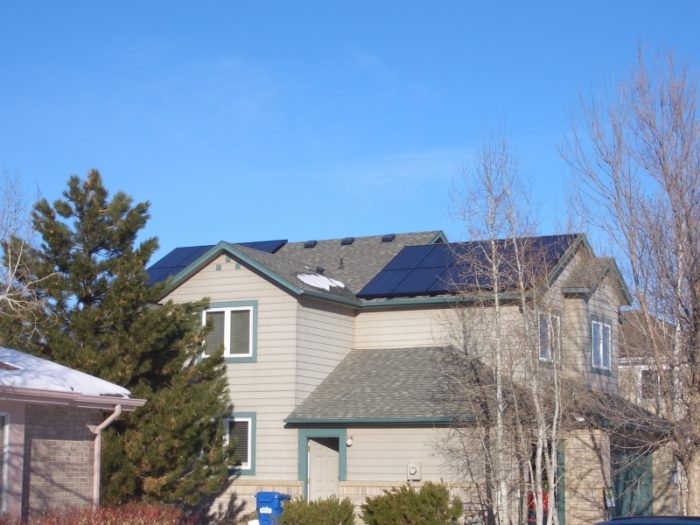
Image Credit: Valerie Walsh
One of the greatest challenges to energy improvements is the financing needed to make those improvements. Conventional home improvement and business loans have such short terms (usually less than ten years) that the interest costs are often greater than the energy savings—making such loans hard to afford for most families and businesses. Also, it’s hard to justify putting money into a house if you’re not sure how long you’ll be there.
To address these concerns, a number of municipalities around the country are experimenting with a unique financing mechanism, referred to as Property-Assessed Clean Energy (PACE) financing or Clean Energy Assessment Districts (CEAD). The first places to implement these programs were Babylon, New York (on Long Island); Berkeley, California; Palm Desert, California; and Boulder County, Colorado. At least 16 states, including Vermont (the only state in New England) have legislation on the books that enable municipalities to create such programs.
Here’s how the PACE model works: A municipality comes up with a pool of money, typically through a municipal bond (though potentially through grants or other mechanisms). Residents are able to borrow from this pool of money at relatively low-interest loans to pay for approved renewable energy systems and energy efficiency improvements. The terms of these loans can be quite long, up to 20 years, and the loans are repaid through an additional line-item on the borrowers’ real estate tax bills. This last provision is the most unique aspect of PACE financing; it allows the loan to stay with the property if the property is sold (or the buyer to pay off the loan when the property is purchased).
With PACE financing, property owners can carry out a wide range of energy improvements, such as weatherization, insulation retrofits, and installation of solar energy systems, without an up-front cash outlay. The loan rates and terms are very attractive because the loans are being made not by a profit-based bank, but by a municipality. And in most cases the dollar savings from the energy retrofits will exceed the loan payment–so the improvements are cash-positive from day one.
Depending on the energy improvements, there may be additional tax incentives or rebates to make projects financed through a PACE program even more attractive.
Implementing a PACE financing program in a municipality does take some effort and management, though, making it more challenging in small towns. Somebody has to manage the logistics and keep the books. For this reason, PACE programs are likely to be implemented initially in larger municipalities where that bureaucratic infrastructure already exists. In rural areas there is potential for municipalities to work together regionally.
While enabling legislation varies from state to state, Vermont’s sets a $30,000 cap on property owner loans, specifies that the loan can total no more than 15% of a property’s assessed value, and limits the total of the PACE loan plus outstanding mortgage to no more than 90% of the assessed value.
Beyond the benefits to businesses and homeowners, PACE financing can benefit a region by injecting money into the local economy, creating jobs, and reducing the export of money out of the region to pay for fossil fuels and electricity.
I invite you to share your comments on this blog. You can also follow my musings on Twitter
Weekly Newsletter
Get building science and energy efficiency advice, plus special offers, in your inbox.















2 Comments
Tax credits
Good post. I did not know of PACE before. Let's not forget the federal government is offering tax credits for a wide range of energy saving products and weatherization techniques, included appliances, to insulation, all the way to geothermal heat pumps. All of this information is located on the DOE's website.
What about tax credits on PACE improvements
See concerns expressed by federal regulators of mortgage finance industry (Fannie Mae overseers):
https://www.efanniemae.com/sf/guides/ssg/relatedsellinginfo/pdf/fhfaeltapletter.pdf
I like this PACE idea but share concerns about underwriting and risk management. Essentially, a PACE "loan" is a priority lien over any existing first mortgage and it does add to a property's total overall debt burden. Lender's have real concerns because they make a loan based on various facts and underwriting standards and after the fact a PACE lien can be put on a property and take priority over their loan, thus increasing risk for that loan.
So you cap the overall debt at 90% of property value - what happens if the property value goes down and the borrower's ability to repay the first mortgage is impaired (i.e. job loss)? What if the $30,000 in improvements don't add any value to a property from the next buyers perspective? If a house was worth $300k and you add $30k in solar to it through PACE "debt" but a buyer only will pay $300k when one wants to sell, then what happens?
Reverse mortgages were a product which had some issues when first rolled out. Older people lost their homes by tapping into equity too soon, while property values declined. New products like PACE need to be proven by forward thinking communities like Burlington so they can be perfected for the benefit of all. Don't forget, basic economics will always win out in the end.
By the way, Burlington Electric may be doing the underwriting of these PACE loans so policy makers should clearly understand the incentives they and Burlington Electric have in rolling out this program.
That being said.....You GO Burlington! Set the PACE for VT!
Log in or create an account to post a comment.
Sign up Log in